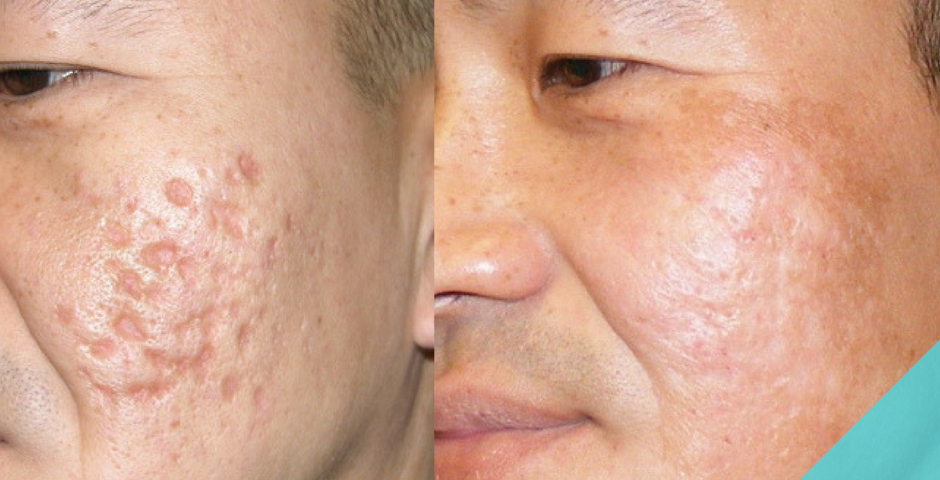Discovering Skin Disease: Identifying and Treating Acne Scars for Healthier Skin
Acne scars represent a significant concern for individuals looking for to maintain healthy and balanced skin, as they can influence both look and self-esteem. Comprehending the different kinds of scars, from atrophic to hypertrophic, is important for identifying ideal therapy choices.
Recognizing Acne Scars

The body's natural recovery procedure can cause either atrophic marks, which look like anxieties in the skin, or hypertrophic marks, which are raised and result from overproduction of collagen. Furthermore, the psychological toll of acne marks should not be underestimated; several individuals report feelings of humiliation, anxiousness, and lowered self-worth. This psychological concern can influence social communications and overall lifestyle.
Dealing with acne marks requires a detailed understanding of their formation and effect. Awareness of the capacity for long-term repercussions connected with neglected marks can encourage people to seek appropriate treatments. Early intervention and effective management methods can significantly enhance skin look and boost emotional durability, emphasizing the relevance of understanding the complexities surrounding acne scars.
Kinds of Acne Marks
Acne scars can be categorized into distinct kinds, each exhibiting special attributes and needing certain treatment approaches. acne scars treatment. The key kinds of acne marks include atrophic, hypertrophic, and keloid scars

Hypertrophic scars, in contrast, are raised over the skin degree and are the outcome of extreme collagen manufacturing during the recovery procedure. They generally continue to be within the boundaries of the original acne lesion. Keloid scars are comparable yet extend past the initial injury site, developing larger, raised areas that can be painful or itchy.
Comprehending these sorts of marks is crucial for picking proper treatment alternatives. Various scars might respond better to certain treatments, such as laser therapies, fillers, or surgical interventions, emphasizing the significance of a customized method to acne scar administration.
Determining Your Scars
When assessing the appearance of your skin, it is important to precisely recognize the kind of marks present, as this will certainly inform one of the most efficient therapy technique. Acne scars generally come under two categories: atrophic and hypertrophic marks. Atrophic scars, which are the most typical, look like depressions or indentations on the skin. These can better be classified right into ice-pick scars, boxcar marks, and rolling marks, each showing distinct characteristics and needing different techniques for assessment.
Hypertrophic marks, on the other hand, are increased and occur because of too much collagen manufacturing during the healing process. Identifying the details features of your marks-- such as size, depth, and structure-- is vital for correct identification (acne scars). Additionally, consider the distribution of marks throughout your skin, as this can indicate the severity and period of the acne condition
Involving with a skin specialist can supply important understandings right into the nature of your marks, assisting in the differentiation in between various acne scars treatment kinds. An extensive understanding of your scars will inevitably lead to a much more customized and reliable treatment strategy, making certain a clearer and much healthier complexion.
Treatment Alternatives Available
Determining the details kind of acne scars existing on your skin prepares for checking out efficient therapy choices. Typical types of acne marks consist of atrophic (clinically depressed), hypertrophic (raised), and post-inflammatory erythema.
For atrophic marks, alternatives such as chemical peels, microneedling, and laser resurfacing are commonly made use of. Chemical peels utilize acids to eliminate the outer layer of skin, promoting brand-new cell growth.
Hypertrophic marks can be treated with corticosteroid injections to flatten the scar or laser treatment to reduce inflammation and enhance appearance. Silicone gel sheets and pressure dressings might additionally help in handling elevated marks.
In enhancement, facial fillers can momentarily fill out depressions from atrophic marks, while surgical excision may be proper for severe situations. Each therapy choice has its factors to consider and benefits, making it necessary to seek advice from with a skin doctor. They can give individualized suggestions based upon the type and seriousness of your marks, as well as your skin type and total health.
Tips for Prevention
Effective avoidance techniques can considerably reduce the probability of developing acne scars. The first action is to maintain a constant skincare regimen that includes mild cleaning, exfoliation, and hydrating. Utilizing non-comedogenic items helps prevent blocked pores, which can intensify acne. Furthermore, including topical therapies having salicylic acid or benzoyl peroxide can effectively take care of outbreaks and decrease inflammation.
Staying clear of need to stand out or select acne sores is crucial, as this can bring about deeper skin damages and increase the danger of scarring. Instead, think about using a cool compress or non-prescription treatments to minimize swelling and inflammation.
Sunlight protection is another vital element of prevention; ultraviolet (UV) rays can dim marks and impede the recovery process. Applying a broad-spectrum sun block with at least SPF 30 daily can protect the skin and advertise even healing.
Finally, preserving a balanced diet rich in vitamins, anti-oxidants, and minerals supports skin health and recovery. Remaining hydrated and handling stress levels can likewise play a significant function in reducing acne flare-ups. By implementing these techniques, people can dramatically reduce their opportunities of developing acne scars.
Conclusion
In conclusion, understanding and recognizing acne marks is important for effective therapy and attaining much healthier skin. Various types of acne scars, including atrophic and hypertrophic marks, necessitate details interventions tailored to private needs.
The body's all-natural recovery procedure can result in either atrophic scars, which show up as clinical depressions in the skin, or hypertrophic marks, which are elevated and result from overproduction of collagen. They are more split right into 3 subtypes: ice choice marks, boxcar marks, and rolling scars. Acne marks usually fall right into two groups: hypertrophic and atrophic marks. These can even more be identified right into ice-pick marks, boxcar scars, and rolling scars, each exhibiting unique attributes and calling for various techniques for assessment.
Numerous types of acne marks, including hypertrophic and atrophic scars, necessitate details treatments tailored to specific needs.